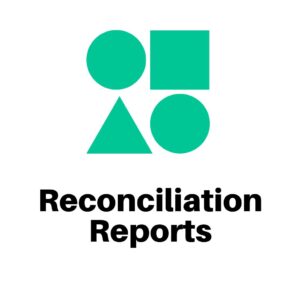Reconciliation Reports: Ensuring Financial Accuracy and Driving Business Confidence
In today’s fast-paced business environment, financial accuracy is non-negotiable. Errors in accounting, whether due to oversight or system glitches, can disrupt operations, erode trust, and affect strategic decision-making. This is where reconciliation reports become essential.
Reconciliation reports are critical tools that verify the consistency of financial records, ensure accuracy across accounts, and provide confidence in business decisions. By regularly analyzing discrepancies and ensuring alignment between internal records and external statements, businesses can maintain financial integrity, optimize cash flow, and foster stakeholder trust.
This article explores the importance, benefits, best practices, and tools for effective reconciliation reporting to help businesses thrive in today’s competitive landscape.
1. What Are Reconciliation Reports?
Reconciliation reports are financial statements that compare two sets of records to confirm that they are consistent and accurate. These reports often match internal accounting records with external documents such as:
-
Bank statements
-
Vendor invoices
-
Payroll records
-
Credit card statements
-
Customer accounts
The goal is to identify and resolve discrepancies, ensuring all financial transactions are recorded correctly.
2. Why Reconciliation Reports Are Crucial
a. Ensure Accuracy
Reconciliation helps identify mistakes, omissions, or fraudulent transactions, ensuring that financial statements reflect true business performance.
b. Maintain Compliance
Accurate reconciliation supports regulatory compliance with accounting standards, tax laws, and auditing requirements.
c. Improve Cash Flow Management
By detecting discrepancies early, businesses can manage cash flow efficiently, avoid overdrafts, and plan expenditures.
d. Enhance Decision-Making
Reliable financial records empower management to make informed strategic decisions based on accurate data.
e. Build Trust with Stakeholders
Investors, banks, and partners rely on accurate reports. Consistently reconciled accounts enhance credibility and confidence.
3. Types of Reconciliation Reports
a. Bank Reconciliation Reports
Compare the company’s internal ledger with bank statements to ensure all deposits and withdrawals are accurately recorded.
b. Vendor/Supplier Reconciliation
Ensure that vendor invoices match internal purchase orders and payment records, reducing errors and avoiding disputes.
c. Customer Account Reconciliation
Verify that customer payments align with invoices, ensuring accurate accounts receivable and minimizing outstanding debts.
d. Payroll Reconciliation
Match payroll records with accounting entries to ensure employee payments, taxes, and deductions are accurate.
e. Inter-Company Reconciliation
For businesses with multiple subsidiaries, this ensures consistency between inter-company transactions.
4. Benefits of Effective Reconciliation Reports
-
Error Detection: Quickly identify discrepancies and rectify them.
-
Fraud Prevention: Detect unauthorized or suspicious transactions early.
-
Financial Accuracy: Maintain reliable records for accounting and auditing purposes.
-
Time and Cost Efficiency: Automated reconciliation reduces manual effort and resource costs.
-
Better Financial Planning: Accurate reports provide insights for budgeting, forecasting, and strategic decisions.
5. Steps for Creating Accurate Reconciliation Reports
Step 1: Gather Records
Collect all internal and external documents, such as ledgers, invoices, bank statements, and payroll data.
Step 2: Compare Transactions
Match transactions from internal records to external sources line by line.
Step 3: Identify Discrepancies
Highlight differences, such as missing entries, duplicate payments, or calculation errors.
Step 4: Investigate and Resolve
Determine the cause of discrepancies and correct the entries promptly.
Step 5: Document Findings
Maintain detailed notes on adjustments and resolutions for accountability and auditing purposes.
Step 6: Review and Approve
Have management or accounting supervisors review the reconciliation report before finalizing.
6. Best Practices for Reconciliation Reports
a. Reconcile Regularly
Perform daily, weekly, or monthly reconciliations depending on transaction volume to avoid backlog and errors.
b. Use Automation Tools
Leverage software like QuickBooks, Xero, or Zoho Books to automate reconciliation and reduce manual errors.
c. Maintain Clear Documentation
Keep records of all reconciliations, adjustments, and approvals to ensure transparency and accountability.
d. Train Accounting Staff
Ensure staff understand reconciliation procedures, best practices, and the importance of accuracy.
e. Standardize Processes
Use templates and checklists to maintain consistency across departments and subsidiaries.
7. Technology and Tools for Reconciliation
Modern technology has simplified and streamlined reconciliation reporting, offering speed, accuracy, and insights:
-
Accounting Software: QuickBooks, Xero, Sage, Zoho Books
-
ERP Systems: SAP, Oracle NetSuite, Microsoft Dynamics
-
Bank Feeds: Direct integration with banks for real-time transaction matching
-
AI-Powered Reconciliation Tools: Automated detection of discrepancies and anomaly alerts
-
Cloud-Based Platforms: Secure access and collaboration across multiple departments
These tools reduce manual workload, minimize errors, and enhance reporting efficiency.
8. Common Challenges and How to Overcome Them
a. High Transaction Volume
Use automation and batching to efficiently reconcile large volumes of transactions.
b. Missing or Delayed Records
Implement timely data collection and integrate systems to ensure all records are accessible.
c. Human Error
Leverage software automation and cross-check entries to reduce errors.
d. Complex Inter-Company Transactions
Maintain standardized protocols for inter-company accounting to ensure consistency.
9. Reconciliation Reports as a Strategic Tool
Beyond compliance and accuracy, reconciliation reports provide strategic insights:
-
Budget Analysis: Identify cost-saving opportunities and monitor expenses.
-
Cash Flow Forecasting: Predict cash inflows and outflows more accurately.
-
Operational Efficiency: Detect inefficiencies or redundant processes.
-
Investor Confidence: Provide stakeholders with reliable financial data, enhancing credibility.
10. The Future of Reconciliation Reporting
The future is automated, intelligent, and predictive:
-
AI and Machine Learning: Detect anomalies, predict discrepancies, and recommend corrective actions.
-
Real-Time Reconciliation: Cloud-based systems provide instant updates across accounts.
-
Blockchain Integration: Secure, immutable records reduce the risk of errors and fraud.
-
Integrated Dashboards: Consolidate reconciliation across multiple accounts for a comprehensive view.
Businesses embracing these technologies will achieve higher accuracy, faster reporting, and better strategic decision-making.
11. Final Thoughts
Reconciliation reports are more than a bookkeeping exercise; they are vital instruments for financial accuracy, operational efficiency, and business growth. By ensuring all accounts are accurate, discrepancies are resolved, and records are transparent, organizations can make informed decisions, maintain stakeholder confidence, and optimize financial performance.
Adopting best practices, leveraging automation, and committing to regular reconciliation empowers businesses to build financial resilience, strengthen internal controls, and foster long-term success.
Whether for small businesses, large enterprises, or multi-branch organizations, effective reconciliation reporting is a cornerstone of sound financial management. Prioritize reconciliation today to safeguard your financial integrity and drive sustainable growth tomorrow.
Visit datahome.solutions today to streamline your reconciliation process and keep your business finances accurate, transparent, and audit-ready.
#DataHomeSolutions,#SmartFinance,#DigitalSolutions, #ReconciliationReports, #FinancialAccuracy, #CashFlowManagement, #AccountingBestPractices, #BusinessFinance, #AuditReady, #AutomatedAccounting











